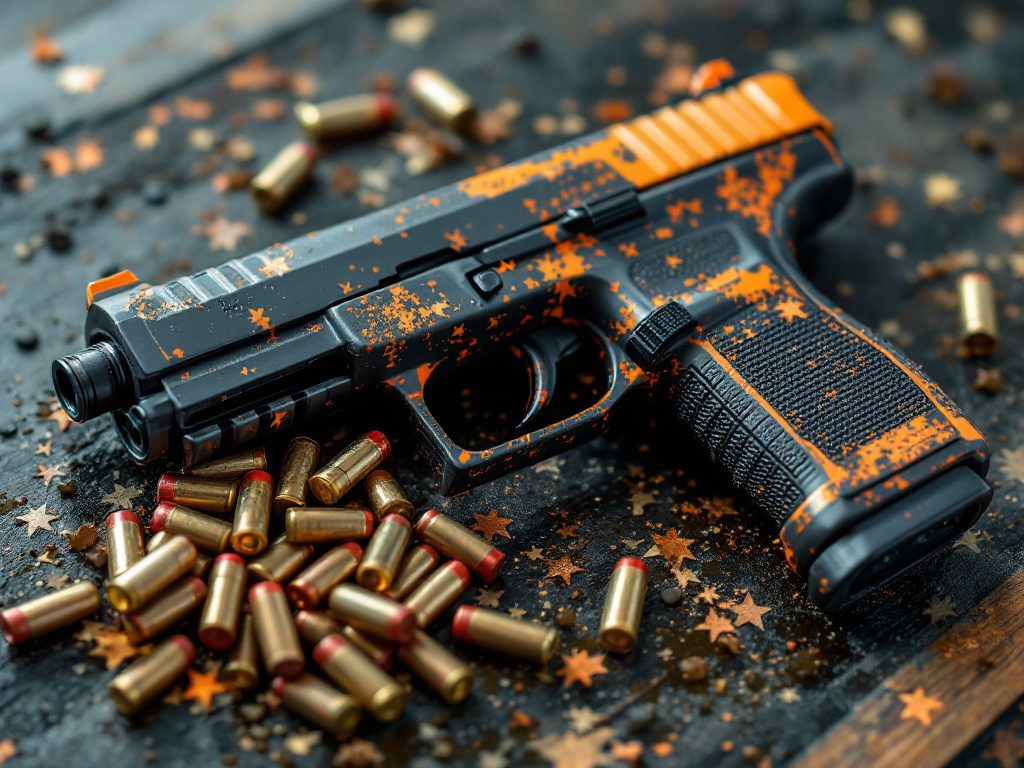The Split-Second Dilemma: Fear or Training?
Sirens cut through the humid Orlando dusk as another 911 call registered a man waving what looked like a firearm—the kind of scenario Americans have seen play out with devastating regularity. This time, 25-year-old Orlin Bueso-Calderon, clutching what would later turn out to be a simulated gun, was shot dead by five responding police officers outside an apartment complex near Millennia. This marked the fourth fatal shooting by Orlando police officers in 2025, and the second in just two weeks—a distressing trend raising urgent questions about police training, systemic failures, and the escalating cost of split-second decisions.
Authorities say the ordeal began at a 7-Eleven where Bueso-Calderon was seen brandishing the fake weapon, allegedly attempting to steal beer. As officers arrived, multiple witnesses described a combination of confusion and fear: Did they see a genuine threat, or was something more nuanced at play? Orlando Police Chief Eric Smith commented that officers must make a “split-second decision when you see a gun pointed in your direction,” suggesting the gravity and pressure that law enforcement face in the field.
Yet, national debate demands we look beyond the heat of the moment. Why, in a city that places millions into its public safety budget, do these deadly encounters persist? The United States faces a crisis wherein ambiguous threats too often meet with overwhelming force. According to the Washington Post’s ongoing fatal police shootings database, more than 1,000 Americans are shot and killed by police every year—a figure that sets the U.S. apart from every other developed nation.
Body Cameras and Accountability: Gaps in the Record
A closer look reveals lingering questions around transparency. To date, Orlando police have not released information regarding body camera footage for this incident, nor clarified whether officers were equipped with cameras at the time. The public’s trust depends on open, accessible records in the hours after a police shooting; without that, skepticism festers.
Countless studies, including a meta-analysis from George Mason University, demonstrate that body-worn cameras reduce complaints against officers and incidents of use-of-force. When footage is withheld, communities are left to fill in the gaps with their own fears and lived experiences. The concern here isn’t about playing Monday morning quarterback—it’s about fundamental accountability. If police know they are being watched, bystander and digital witness alike, their actions improve. Without that, tragic outcomes remain all too common.
“We cannot build safer communities when body camera footage is treated as a state secret, nor can we accept that the only thing separating life from death is the fallibility of a split-second decision.”
Transparency is not just about optics; it is about justice. A community that cannot see how or why an officer pulls the trigger can never be expected to trust those meant to serve and protect.
Mental Health, Crisis Response, and Re-Imagining Safety
Beyond the headlines, tragedy strikes at the intersection of public health and law enforcement. Chief Smith acknowledged that whether Bueso-Calderon was experiencing a mental health episode will be part of the Florida Department of Law Enforcement’s ongoing investigation. Mental health crises should not be a death sentence, yet across the country, those in emotional distress are often met with guns instead of counselors.
The consequences of this approach are stark. According to the Treatment Advocacy Center, people with untreated mental illness are 16 times more likely to be killed during a police encounter than anyone else. The Orlando shooting recalls countless similar tragedies: From Daniel Prude in Rochester, NY to Elijah McClain in Aurora, CO, police often default to force rather than de-escalation, with deadly results.
Progressive advocates and researchers argue for a sea change. “When we place the responsibility for mental health crises on law enforcement alone, we set everyone up for tragedy,” explains Dr. Rashida Govan, a sociologist focusing on public safety reform. Cities like Denver and Eugene, Oregon have pioneered programs pairing social workers and medical professionals with police—or replacing police entirely for certain calls. These initiatives have reduced violent encounters and saved lives, while also freeing up police to focus on actual threats.
What keeps policymakers from fully embracing this shift? Too often, the opposition comes from those clinging to outdated tough-on-crime mentalities, championed by conservative lawmakers. These approaches rest on the flawed premise that more force equals more safety. The mounting death toll tells a different story.
Looking at Bueso-Calderon’s case—and so many like it—you’re left to wonder: Could a team trained in crisis intervention have diffused this situation? Would body camera footage have clarified what actually happened in those tense seconds? What does real accountability, and genuine reform, look like in practice?
Charting a New Path Forward
True public safety isn’t just about guns and badges—it’s about systems that prevent tragedy before it arrives. The FDLE investigation will determine whether the officers followed existing protocol, but the deeper question sits with us all: Are these protocols the best we can do? Or are they vestiges of a system in need of radical transformation?
Americans deserve policing that values every life and takes every precaution to avoid deadly escalation. This takes political will, honest accountability, and investment in alternatives—especially mental health crisis teams and robust community supports.
No policy can undo what happened to Orlin Bueso-Calderon. But with each new tragedy, a path opens for bolder advocacy, genuine reform, and a future where Orlando—and cities nationwide—stop mistaking the simulation of a threat for justification of deadly force.

